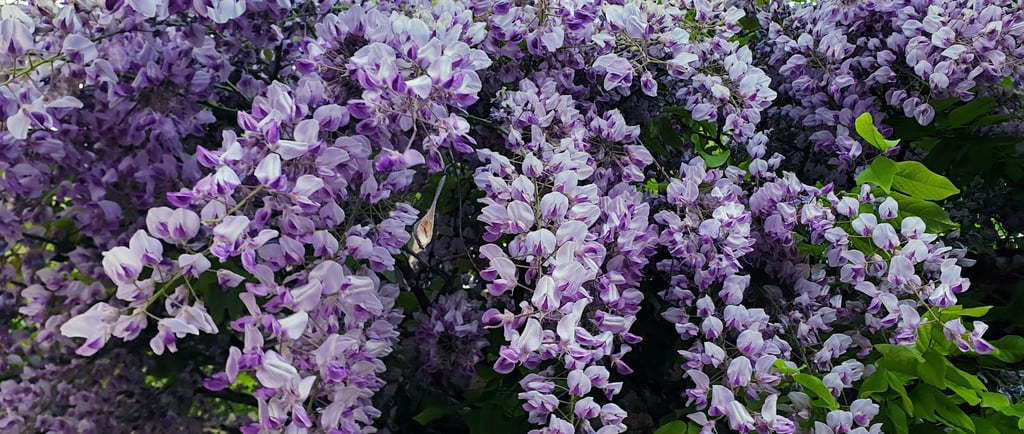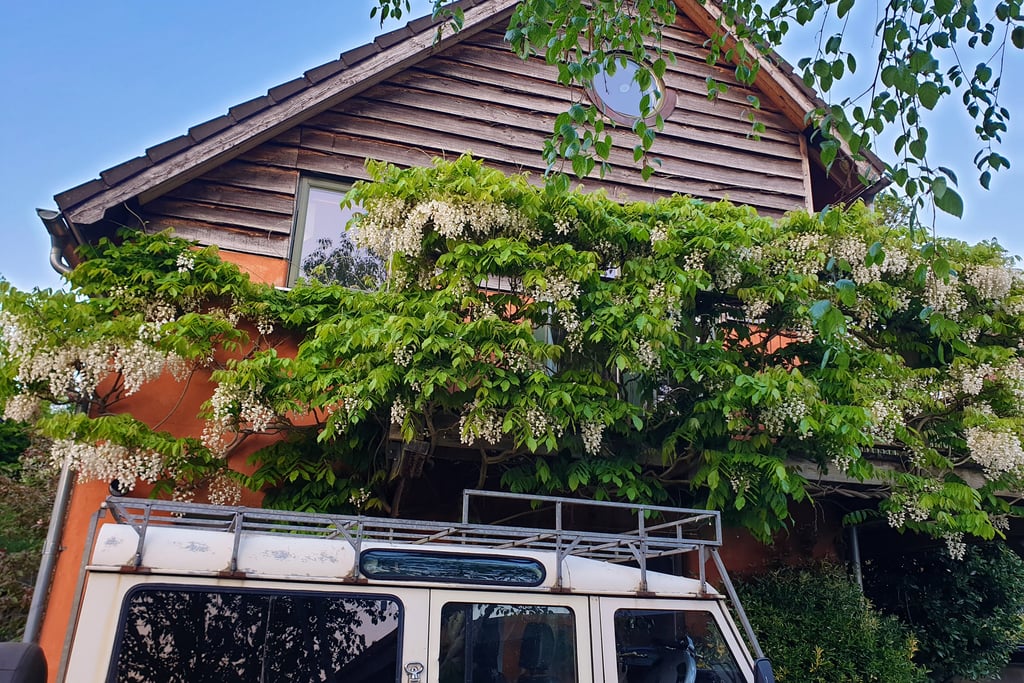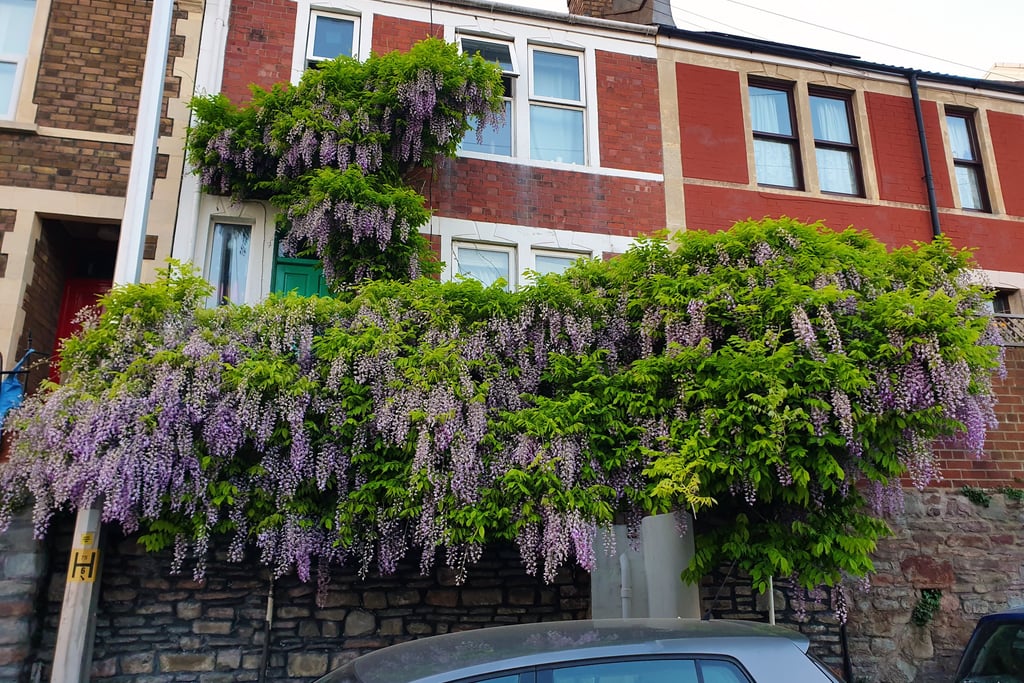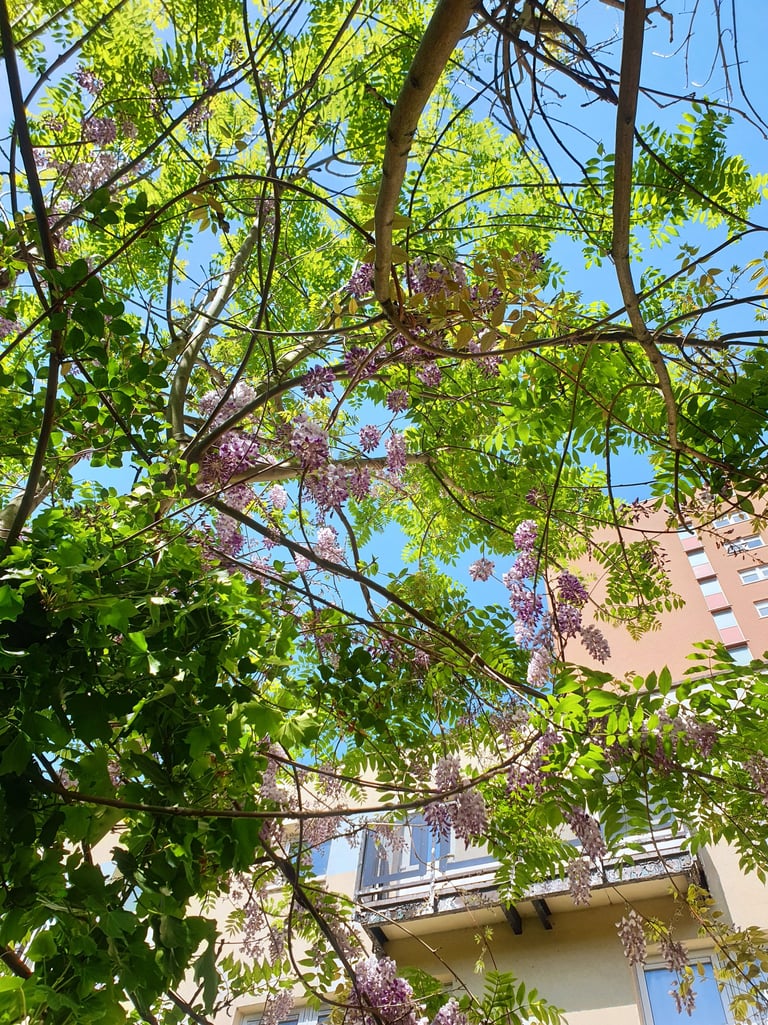Wisteria
There are few plants that you can grow in temperate climates more palacial than Wisteria
PLANT SPOTLIGHT
7/24/20254 min read


Wisteria is a genus of woody climbing (or twining) vines in the pea and bean family, Fabaceae. These plants grow large and live for many years, producing long racemes of pea-like flowers that are, dependent on species and cultivar, usually highly fragrant. Wisteria bloom in late spring or early summer, typically around the same time as trees such as Laburnum, Cercis and Syringa in the Bristol.
Favourites of country cottages and town houses, Wisteria's flowering display is often so impressive that individual specimens can become tourist attractions, such as the immense 155 year old Wisteria floribunda at Ashikaga Flower Park in Japan or the 'Sierra Madre Wistaria' in California that spans one acre and produces an estimated 1.5 million blossoms (apparently this is the largest cultivated flowering plant in the world). Even grown on supports on the side of a house, as is common in the UK, Wisteria make a stunning spectacle. But there are important considerations before deciding to plant one of these impressive plants in your garden, including size and flower characteristics.
Species & cultivars
There are four species of Wisteria. Three are native to east Asia; W. sinensis to China, W. floribunda and W. brachybotrys to Japan. W. frutescens, and subspecies W. frutescens var. macrostachya, is native to Kentucky in the USA up to southern Canada, where W. macrostachya . The Asian species grow much larger and more vigorously than the American species, and are generally much more floriferous and highly scented. However, the latter is more cold tolerant if you live in an area with particularly harsh winters.
There are also numerous cultivars of all of these species, with varying scents, flower colour, raceme (flower cluster) length, plant size and even age at which the plant will produce flowers. An important thing to note about Wisteria is that plants are known to take a long time to flower from planting, sometimes 5 years or more. That is why you should always choose a grafted plant, and preferably one that is already at the flowering stage (if grown from seed, Wisteria can take 20 years to flower!). The American species is smaller, less vigorous and more suitable for smaller gardens, and has the advantage of a newly developed cultivar, 'Amethyst Falls', that flowers reliably in its first year of planting. Note that this species, and in particular this cultivar, have very short racemes that are less scented than many of the Asian varieties. In general, W. floribunda has the longest racemes, with some cultivars such as 'Multijuga' up to 1 metre in length! W. sinensis has shorter racemes but some cultivars are highly scented and capable of flowering multiple times per year, as in the case of W. sinensis 'Prolific'.
Planting
Wisteria grow by twining clockwise or counterclockwise (dependent on species) around a vertical support. In the wild this would be the trunks of other trees and shrubs. As Wisteria cannot cling to walls in the same manner as plants such as ivy or virginia creeper, in a garden context they must be trained up a sturdy support, whether it is a pergola or strong wires attached to masonry. This support must be able to stand the test of time, as Wisteria live long and become heavy. Another, more naturalistic option is to grow them at the base of other trees that they can scramble through, using the branches as supports. Wisteria appreciate shade at soil level, so if possible plant them with other shrubs that can shelter the area around the roots from the direct sun.




Care
All species require regular pruning twice yearly to contain their rampant habit and maximise flowering; the RHS recommends it to be done in January and February and again in July and August. The three Asian species are very vigorous and can grow tall and wide, putting out lots of side shoots that require pruning. This makes maintaining them quite involving, especially on larger plants. Wisteria have been known to twine around exposed structures such as drainpipes and telephone wires, and sometimes the growing tips find their way under the eaves of your house, hence the important of pruning. Any renovation (or hard) pruning of older branches and woody growth needs to be done in winter whilst the plant is dormant (however bare in mind that flowering occurs on one year old growth so renovation pruning may result in your plant not flowering for a year afterwards). Typically this is only done on plants that have not been pruned for many years or have become too large. If Wisteria are grown up an established tree for support, they can be left to their own devices for a naturalistic feel at the risk of potential problems a few years down the line.




Above: Impressive Wisteria floribunda growing on house front in Bristol
Below: Wisteria floribunda 'Shiro-noda', a white flowered cultivar


A free scrambling Wisteria sinensis growing up the similarly leaved native ash tree in Bristol. Ash trees are suffering dieback across the country, so this Wisteria could have picked a better tree to scramble up.
Flower colour varies between the typical lilac to a mauve, such as Wisteria floribunda 'Kuchi-beni'
Trefoil Garden Maintenance
Organic gardening services in Bristol and surrounds
Contact
Subscribe to my mailing list
+44 74 810 096 42
© Trefoil Garden Maintenance 2025. All rights reserved.
